Canadian Pavilion examines move "from igloos to internet" in Inuit communities
Venice Architecture Biennale 2014: visitors can examine soapstone carvings and peer through narrow peepholes inside Canada's biennale pavilion, which focusses on architecture's role in the Inuit communities of Nunavut – the country's youngest and most northerly territory.
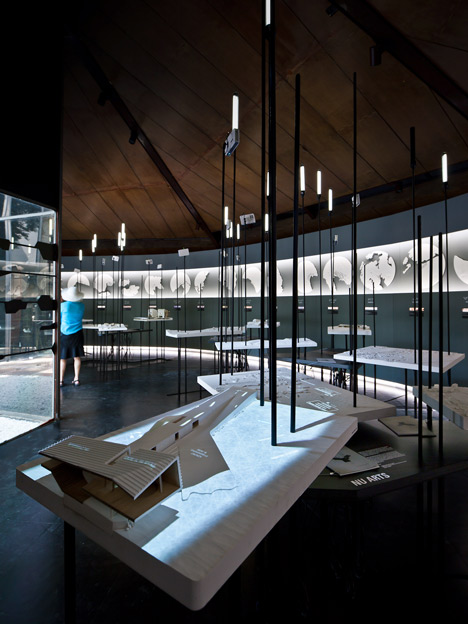
Curated by Canadian studio Lateral Office, the Arctic Adaptions exhibition explores the transition "from igloos to internet" in Nunavut, which has only been part of Canada for 15 years and remains one of the least densely populated regions in the world.
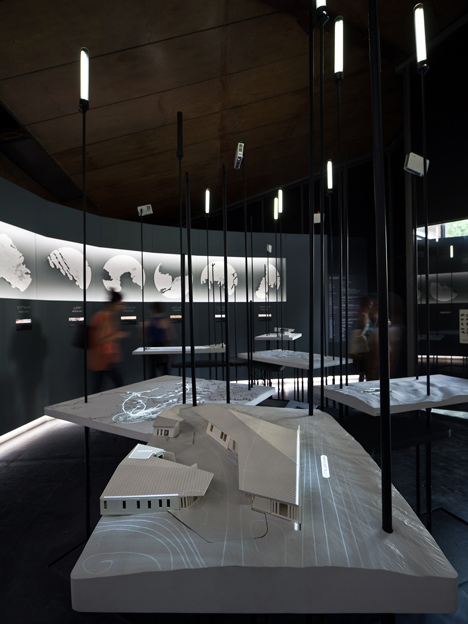
Using interactive models and photography, the curators set out to question whether architecture and infrastructure – largely used as tools of colonisation over the last 100 years – can also help to shape these Arctic settlements into modern cities without sacrificing their unique identity.
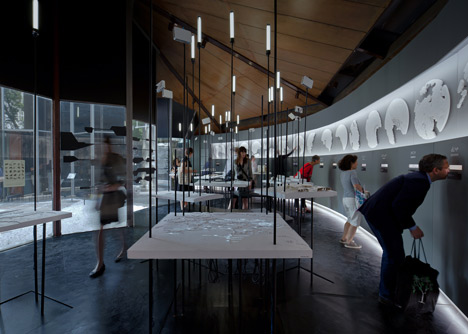
"The exhibition celebrates the remarkable resilience, adaptability and innovative nature of Inuit culture, one able to bridge tradition and modernity in remarkable ways," said Lateral Office principal Lola Sheppard.
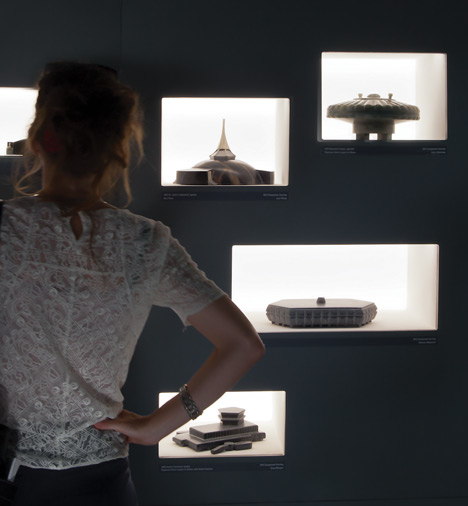
At the entrance to the pavilion, an array of soapstone sculptures carved by Inuit artists present a selection of important modernist buildings completed by in Nunavut in the last century.
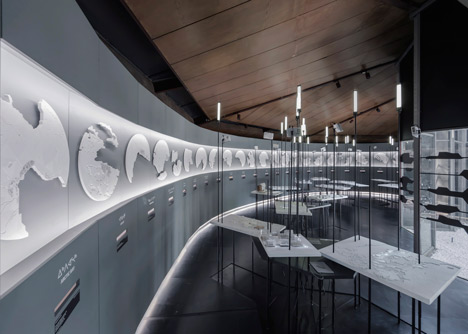
These are accompanied by a series of wall-mounted bas-relief models repressing each of Nunavut's 25 communities, from a hamlet of just 120 people to regional capital Iqaluit, home to around 7,000 people.
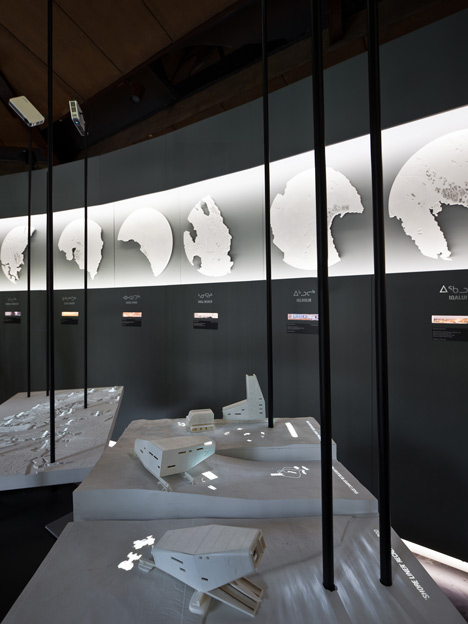
Narrow slots in the walls look through to photographs of these places, while 15 topographical models are brought to life with lighting to present proposals for the future in housing, health, education, arts and recreation.
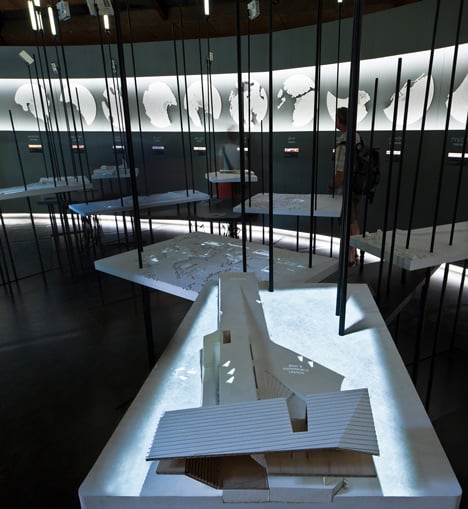
Arctic Adaptions was one of three exhibitions to receive a special mention at the biennale awards ceremony, behind the Silver Lion-winning Chilean Pavilion and Golden Lion recipient Korea.
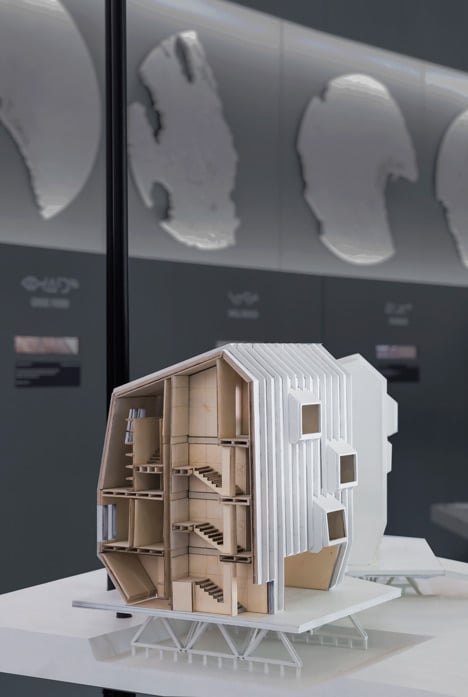
"This award is important because it highlights the key role that architecture has played and could play in the future, in a region where architecture and urbanism have been largely overlooked, except as tools of colonisation," said Sheppard.
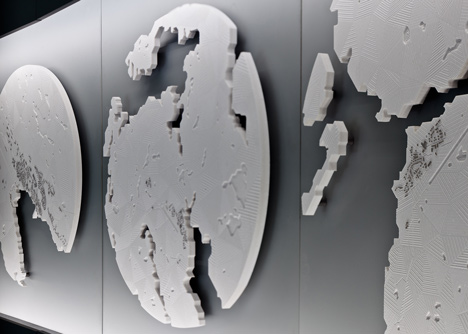
Follow Dezeen's coverage of the Venice Architecture Biennale »
Read on for more information from the exhibition team:
Arctic Adaptations: Nunavut at 15 to represent Canada at the 14th International Architecture Exhibition – la Biennale di Venezia
Arctic Adaptations: Nunavut at 15 is Canada's national exhibition at the 14th International Architecture Exhibition - la Biennale di Venezia. It is organised and curated by Lateral Office of Toronto.
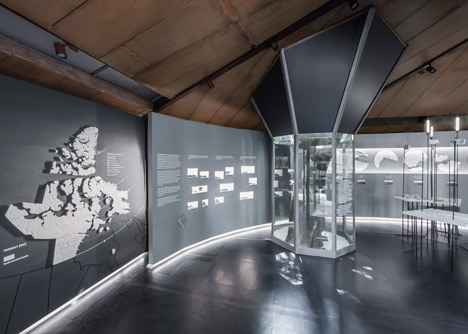
Arctic Adaptations: Nunavut at 15 surveys a recent architectural past, a current urbanising present, and a projective near future of adaptive architecture in Nunavut. Nunavut, which means "our land", is Canada's newest, largest, and most northerly territory. It separated from the Northwest Territories on April 1, 1999 following a hard-fought land claims agreement established in 1993. Today, there are almost 33,000 people living in 25 communities across two million square kilometres, making Nunavut one of the least densely populated regions in the world. These communities, located above the tree line and with no roads connecting them, range in population from 120 in the smallest hamlet to 7,000 in Nunavut's capital city of Iqaluit. The climate, geography, and people of Nunavut, as well as the wider Canadian Arctic, challenge the viability of a universalising modernity.
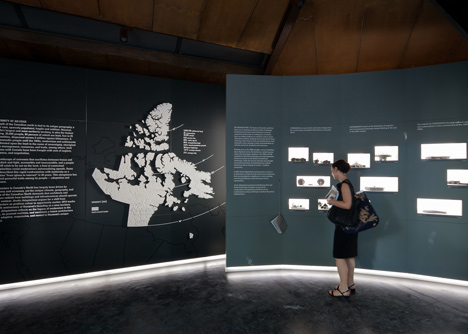
Following the age of polar exploration in the 20th century, modern architecture encroached on this remote and vast region of Canada in the name of sovereignty, aboriginal affairs management, or trade, among others. However, the indigenous Inuit people have inhabited the Canadian Arctic for millennia as a traditionally semi-nomadic people. Inuit relations with Canada have been fraught with acts of neglect, resistance, and negotiation. Throughout the last 100 years, architecture, infrastructure, and settlements have been the tools for these acts. People have been re-located; trading posts, military infrastructure, and research stations have been built; and small settlements are now emerging as Arctic cities. Some have described this rapid confrontation with modernity as a transition "from igloos to internet" compressed into forty years. This abruptness has revealed powerful traits among its people – adaptation and resilience qualities which modern architecture has often lacked.
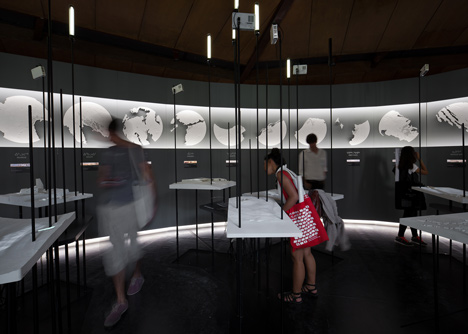
Few places exemplify the ability to adapt in the face of modernity better than Nunavut. Coinciding with the 15th anniversary of the establishment of the territory, which changed Canada's map, Arctic Adaptations explores modernism's legacy within the contextual particularities of the North. The exhibition documents architectural history in this remarkable but relatively unknown region of Canada, describes the contemporary realities of life in its communities, and examines a projected role for architecture moving forward. It argues that modern Inuit cultures continue to evolve and merge the traditional and the contemporary in unique and innovative ways, and questions whether architecture, which has largely failed this region – both technically and socially – can be equally innovative and adaptive.
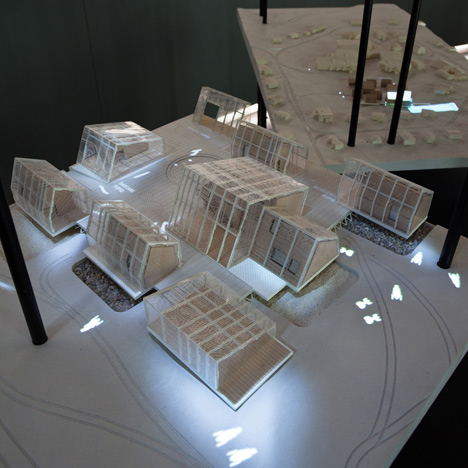
As Nunavut celebrates its 15th anniversary in 2014, Arctic Adaptations simultaneously reflects on this rapid modernisation and presents innovative architecture proposals by five design teams. Each team is made up of a Canadian school of architecture, a Canadian architecture office with extensive northern experience, and a Nunavut-based organisation. Each team's proposal examines one theme – housing, health, education, arts, or recreation – and is rooted in Nunavut's distinct land, climate and culture. They reflect local traditions of migration, mobility and seasonality and respond to regional as well as local realities, including climate change, economic transformations, and a young and rapidly growing population.
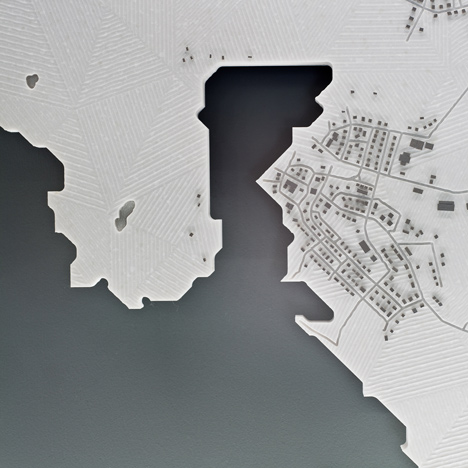
Arctic Adaptations includes animated architectural models of each proposal. Each of Nunavut's 25 communities are represented with a topographic model and photograph. Specially commissioned soapstone carvings document important modernist buildings in Nunavut from the past 100 years.
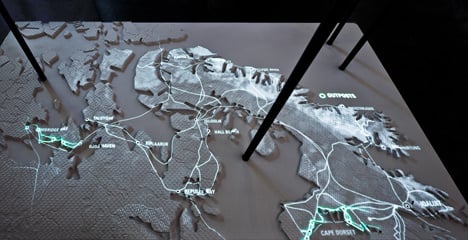
Arctic Adaptations responds directly to the theme of the 14th International Architecture Exhibition: Absorbing Modernity: 1914-2014. Modernity is often fearful of the specificities of place and the premise of 'the local'. Yet Nunavut – a place with little to no daylight in certain seasons, temperatures averaging below freezing, no roads between communities, and a people that live out on the land – seems to resist modernism's universalising tendency. This unique exhibition seeks to reveal acts of architectural resistance and identify an unrecognised modern Canadian North. Proposals focus on the fundamentals of human habitation in the North and offer ideas of how architectural design can enhance daily life.